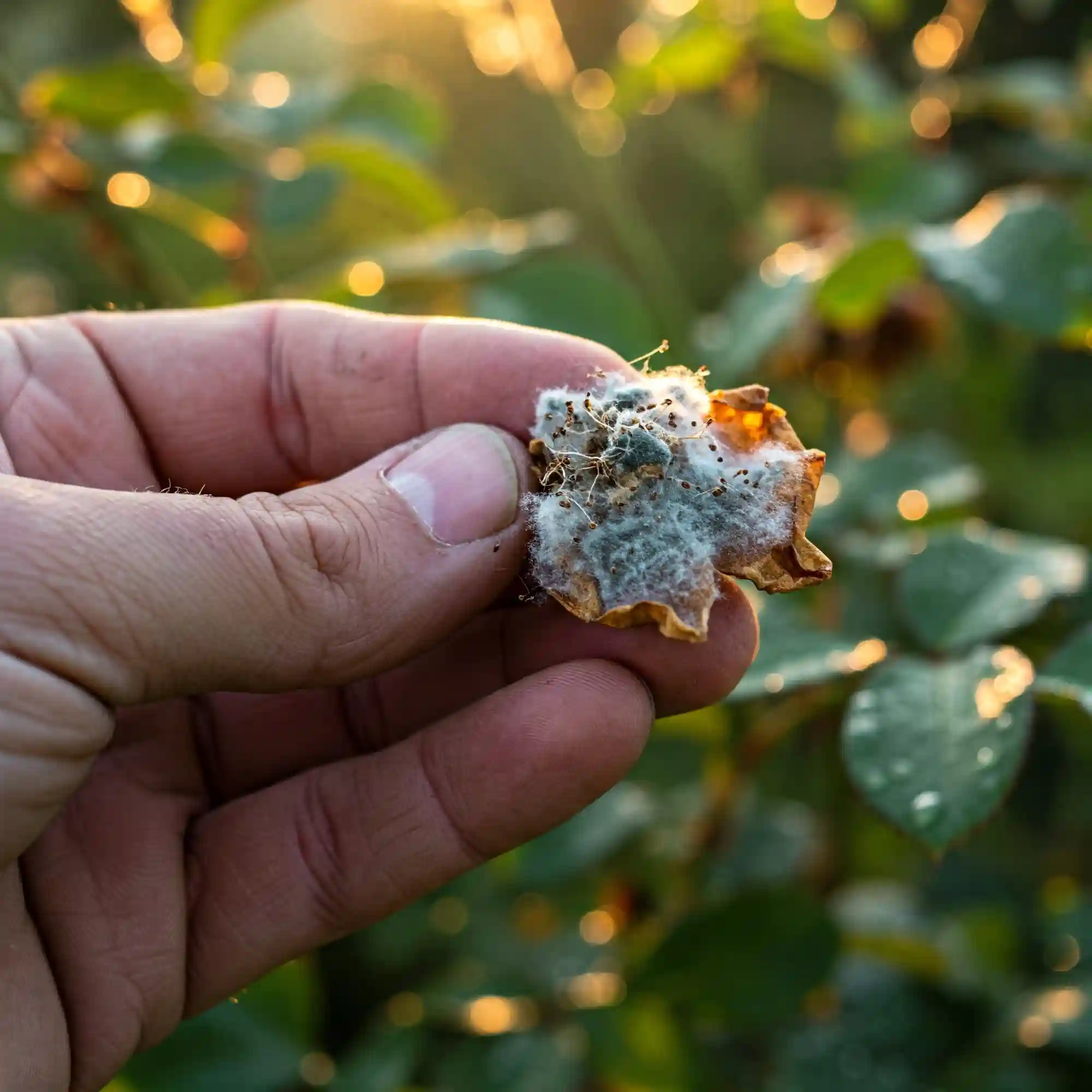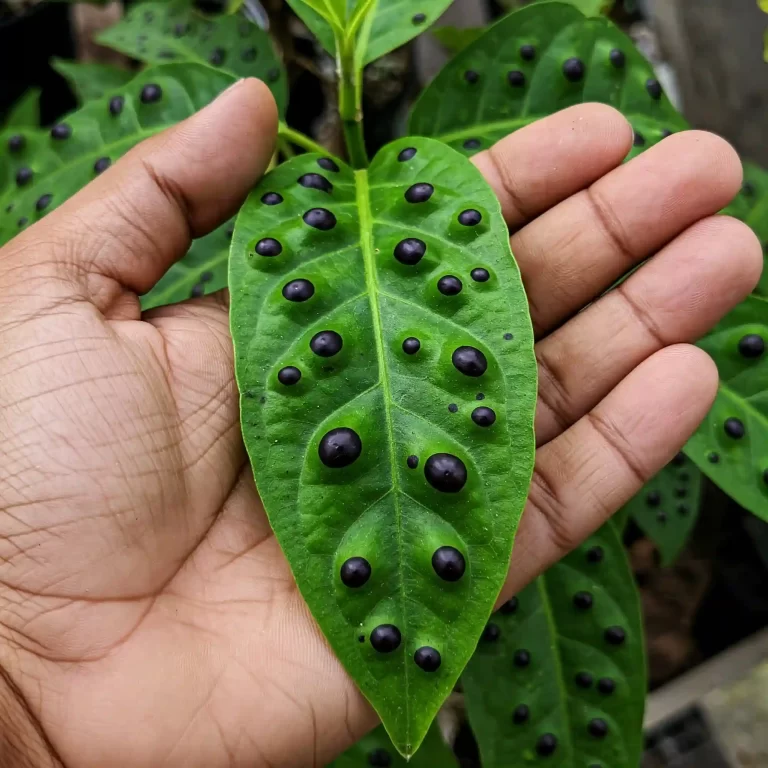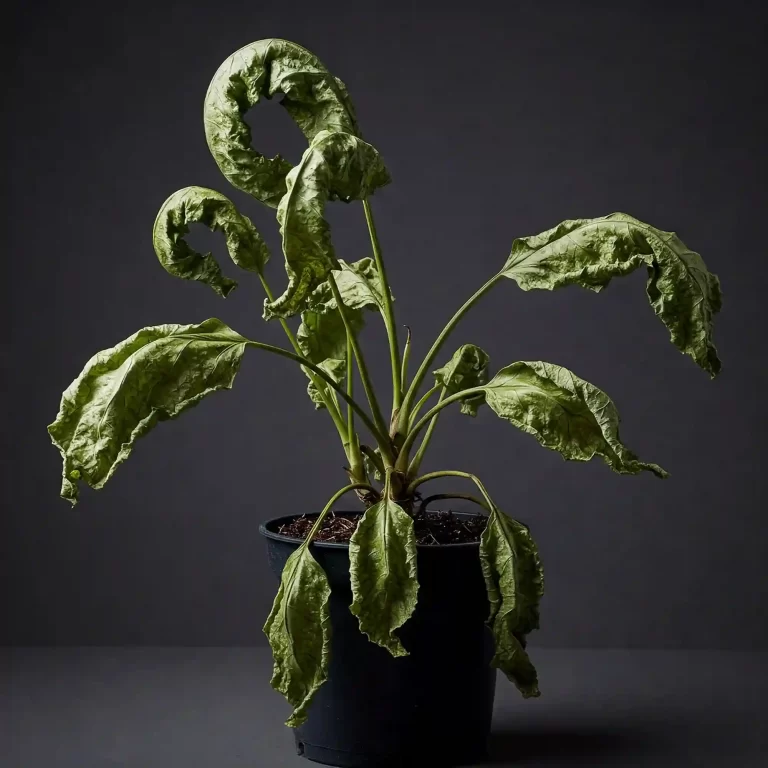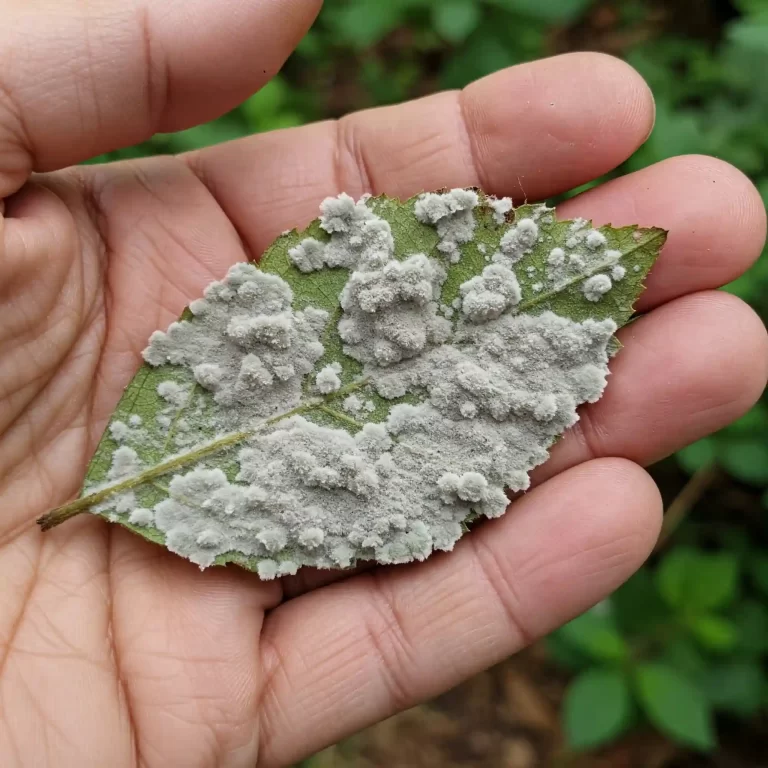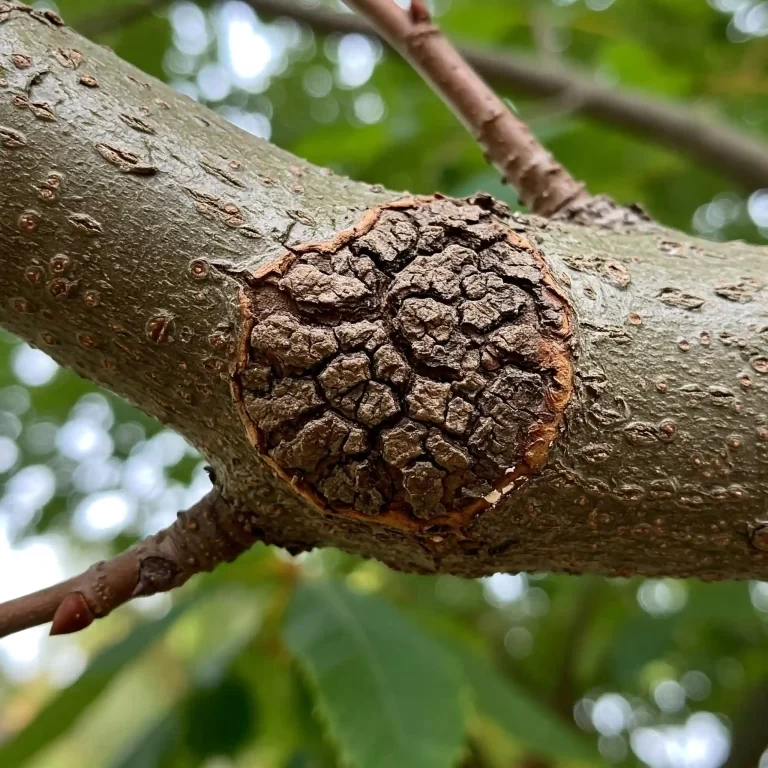Botrytis Blight: Your Ultimate Guide to Prevention and Control
Have you ever walked into your garden, excited to see the progress of your precious plants, only to be met with the disheartening sight of gray, fuzzy mold creeping across your flowers, fruits, or leaves? It’s a gut-wrenching feeling, I know. You’ve poured your heart and soul into nurturing these plants, and now this dreaded disease, Botrytis blight, threatens to ruin all your hard work. This fungal foe can quickly devastate a garden, turning healthy foliage into a decaying mess. But don’t despair! There’s hope. In this comprehensive guide, I’ll share proven strategies for preventing, controlling, and managing Botrytis blight, empowering you to protect your garden and enjoy the fruits (and flowers!) of your labor.
What is Botrytis Blight? Understanding the Fungus
Botrytis blight, commonly known as gray mold, is a pervasive fungal disease caused by the pathogen Botrytis cinerea. This opportunistic fungus has a broad host range, meaning it can infect a vast array of plants, from ornamentals like roses and peonies to essential food crops such as strawberries, tomatoes, and grapes. I’ve personally witnessed its devastating effects on everything from delicate blossoms to ripening fruits, and I understand how frustrating it can be.
Botrytis cinerea is a necrotrophic fungus. This means it kills plant tissue to obtain nutrients. This destructive feeding habit is what causes the characteristic symptoms of Botrytis blight. The fungus spreads through microscopic spores that are easily dispersed by various means:
- Wind: These lightweight spores become airborne and can travel considerable distances, infecting neighboring plants or even gardens further away.
- Splashing Water: When you water your plants or when it rains, water droplets can splash spores from infected plant parts onto healthy ones. This is why overhead watering can exacerbate the spread of Botrytis blight.
- Insects: Certain insects can inadvertently carry spores from infected plants to healthy ones, further contributing to disease transmission.
- Contaminated Tools: If you use pruning shears or other gardening tools on an infected plant and then use them on a healthy plant without proper sanitation, you risk spreading the fungus.
The fungus’s lifecycle is crucial to understand for effective management. Botrytis cinerea can survive in various forms:
- Sclerotia: These are hardened fungal structures that allow the fungus to survive unfavorable conditions, such as cold winters or dry periods. They can overwinter in plant debris, in the soil, or even on garden structures, waiting for favorable conditions to resume their destructive cycle.
- Mycelium: This is the vegetative part of the fungus, consisting of thread-like filaments that grow on and within the plant tissue. It’s responsible for the gray, fuzzy mold characteristic of Botrytis blight.
- Conidia: These are the asexual spores produced by the fungus, responsible for its rapid spread. They are produced in abundance on infected plant tissue, readily becoming airborne or dispersed by water.
Favorable Conditions for Botrytis Blight Development:
- High Humidity: Botrytis thrives in humid environments. I’ve noticed that outbreaks are particularly common during periods of prolonged dampness or in gardens with poor air circulation.
- Cool Temperatures: While Botrytis can tolerate a range of temperatures, it tends to flourish in cool, damp conditions, typically between 60-70°F (15-21°C).
- Prolonged Wetness: Extended periods of leaf wetness, whether from rain, dew, or overhead watering, create ideal conditions for spore germination and infection.
Understanding these conditions allows you to take proactive steps to minimize the risk of Botrytis blight in your garden. For example, proper spacing of plants is crucial, as it promotes air circulation and reduces humidity within the plant canopy. I always make sure to prune dense foliage to further enhance airflow, especially in susceptible plants like roses.
Identifying Botrytis Blight: Spotting the Symptoms
Recognizing Botrytis blight early is crucial for effective treatment. Through my years of gardening, I’ve learned that early detection can make all the difference in saving your plants. Here are the common symptoms I’ve observed:
- Gray Mold: This is the hallmark of Botrytis blight. You’ll notice a fuzzy, gray mold growing on affected plant parts. It often appears on decaying or damaged tissue first, but it can quickly spread to healthy areas.
- Blossom Blight: Flowers are particularly susceptible. You might see brown spots developing on the petals, followed by rapid wilting and decay. In severe cases, the entire blossom can be consumed by the mold.
- Fruit Rot: On fruits like strawberries and tomatoes, Botrytis blight causes soft, decaying spots that are often covered in the characteristic gray mold. This can lead to significant crop losses if left unchecked.
- Stem Lesions: On stems, Botrytis blight can cause brown or black lesions. These lesions can sometimes girdle the stem, cutting off the flow of water and nutrients and causing the plant to wilt and die.
- Leaf Spots: Leaves can develop brown or gray spots, often with a target-like appearance. These spots can enlarge and merge, causing large areas of the leaf to die.
Here’s a table summarizing the symptoms of Botrytis blight on different plant parts:
| Plant Part | Symptoms |
| Flowers | Brown spots on petals, wilting, decay, gray mold |
| Fruits | Soft, decaying spots, often covered in gray mold |
| Stems | Brown or black lesions, girdling, wilting |
| Leaves | Brown or gray spots, often with a target-like appearance |
Remember, early detection is key. If you spot any of these symptoms, take action immediately to prevent the disease from spreading.
What Plants are Susceptible to Botrytis Blight?
Botrytis blight, caused by the fungus Botrytis cinerea, is a common plant disease that affects a wide range of plants. While some plants are more resistant to Botrytis blight, others are highly susceptible and require extra care and attention.
Factors Increasing Susceptibility:
- Dense foliage: Plants with dense foliage tend to have poor air circulation, which creates a humid environment that favors Botrytis blight.
- Poor air circulation: Plants that are grown in crowded conditions or in areas with poor air circulation are more likely to develop Botrytis blight.
- Wounds or injuries to plants: Wounds or injuries to plants can provide entry points for Botrytis cinerea spores, making them more susceptible to infection.
Commonly Affected Plants:
- Roses: Roses are highly susceptible to Botrytis blight, especially during periods of high humidity or rainfall. The disease can cause the petals to develop brown spots and eventually rot.
- Strawberries: Botrytis blight can cause significant losses in strawberry crops, especially during wet seasons. The fungus can infect the blossoms, causing them to turn brown and fail to develop into fruit. It can also infect the fruit directly, causing it to rot.
- Tomatoes: Botrytis blight can affect tomatoes at all stages of development. The fungus can cause lesions on the stems, leaves, and fruits. Infected fruits may develop soft, watery spots that eventually become covered in gray mold.
- Grapes: Botrytis cinerea is responsible for “noble rot” in grapes, a condition that can improve the flavor of sweet wines. However, it can also cause significant damage to grape crops, especially in humid conditions. The fungus can infect the grapes, causing them to rot and shrivel.
- Peonies: Peonies are susceptible to Botrytis blight, especially during cool, wet weather. The disease can cause the flowers to develop brown spots and prematurely wilt. It can also infect the leaves and stems, causing them to develop dark lesions.
- Lettuce: Botrytis blight can cause lettuce to develop a condition known as “bottom rot.” The fungus infects the leaves that are in contact with the soil, causing them to rot. The disease can spread quickly, especially in humid conditions.
- Cyclamen: Cyclamen are susceptible to Botrytis blight, especially during periods of high humidity. The disease can cause the flowers to develop brown spots and prematurely wilt. It can also infect the leaves and stems, causing them to develop dark lesions.
- Beans: Botrytis blight can cause significant losses in bean crops, especially during wet seasons. The fungus can infect the pods, causing them to rot. It can also infect the leaves and stems, causing them to develop lesions.
- Lilies: Botrytis blight can cause lilies to develop unsightly brown spots on their leaves and flowers. The disease can also cause the stems to rot, leading to the death of the plant.
Remember, early detection is key. If you spot any of these symptoms, take action immediately to prevent the disease from spreading and ensure the health of your garden.
How Does Botrytis Blight Spread? Understanding the Disease Cycle
The spread of Botrytis blight is a complex process that involves several factors. Understanding how this disease spreads can help you take steps to prevent it from affecting your plants.
Spore Dispersal:
- Wind: The fungal spores of Botrytis cinerea are easily dispersed by wind, allowing the disease to spread quickly from plant to plant.
- Splashing water: Water droplets can splash spores from infected plant parts onto healthy ones, especially during watering or rainfall.
- Insects: Insects can also carry spores from infected plants to healthy ones, contributing to the spread of the disease.
- Contaminated tools: Pruning shears, gardening gloves, and other tools can become contaminated with fungal spores and spread the disease if not properly sanitized.
Favorable Conditions:
- High humidity: Botrytis blight thrives in humid environments, especially when combined with poor air circulation.
- Cool temperatures: Cool temperatures, particularly between 60-70°F (15-21°C), favor the development of Botrytis blight.
- Prolonged wetness: Extended periods of leaf wetness, whether from rain, dew, or overhead watering, create ideal conditions for spore germination and infection.
Overwintering:
- Plant debris: Botrytis cinerea can survive in plant debris, allowing it to overwinter and infect new plants in the spring.
- Soil: The fungus can also survive in the soil, making it important to practice crop rotation and soil sanitation.
- Garden structures: Botrytis cinerea can even overwinter on garden structures, such as stakes and trellises, so it’s important to clean and disinfect these items regularly.
Understanding the Disease Cycle:
The Botrytis blight disease cycle involves several stages:
- Survival: The fungus survives in plant debris, soil, or garden structures during unfavorable conditions.
- Spore production: When conditions become favorable, the fungus produces spores.
- Spore dispersal: The spores are dispersed by wind, water, insects, or contaminated tools.
- Infection: The spores land on susceptible plant tissue and germinate, penetrating the plant and causing infection.
- Colonization: The fungus colonizes the plant tissue, causing symptoms such as gray mold, blossom blight, fruit rot, stem lesions, and leaf spots.
- Repeat: The fungus produces more spores, which can then spread to other plants and start the cycle anew.
By understanding how Botrytis blight spreads and the conditions that favor its development, you can take proactive steps to prevent it from affecting your plants.
Botrytis Blight Prevention: Proactive Plant Care
Prevention is always better than cure, especially when it comes to plant diseases like Botrytis blight. By taking a few proactive steps, you can significantly reduce the risk of your plants becoming infected. Here are some effective prevention strategies I’ve learned over the years:
Proper Spacing:
- Air circulation: Ensure adequate spacing between plants to promote good air circulation. This helps to reduce humidity and prevent the build-up of moisture on plant surfaces, making it less favorable for Botrytis spores to germinate and infect.
- Plant size: Consider the mature size of your plants when spacing them. Overcrowding can lead to poor air circulation and increased humidity, creating ideal conditions for Botrytis blight.
Pruning and Sanitation:
- Regular pruning: Regularly prune your plants to remove any dead, damaged, or diseased foliage or flowers. This helps to improve air circulation and prevent the spread of Botrytis blight.
- Sanitize tools: Sanitize your pruning shears and other gardening tools regularly, especially after using them on infected plants. This helps to prevent the spread of fungal spores.
- Remove debris: Remove plant debris from around your plants regularly. This helps to eliminate potential sources of Botrytis spores.
Watering Practices:
- Water at the base: Water your plants at the base, avoiding wetting the foliage. Wet foliage creates ideal conditions for Botrytis blight.
- Water in the morning: Water your plants in the morning so that the foliage has time to dry before nightfall.
- Avoid overhead watering: If possible, avoid overhead watering, as this can create a humid environment that favors Botrytis blight.
Improving Air Circulation:
- Use fans: If you’re growing plants in a greenhouse or other enclosed space, use fans to improve air circulation.
- Prune dense foliage: Prune dense foliage to improve airflow around your plants.
- Provide adequate ventilation: Ensure that your greenhouse or other enclosed space has adequate ventilation.
Mulching:
- Use organic mulch: Apply a layer of organic mulch around your plants. This helps to prevent soil splash, which can spread Botrytis spores.
- Choose the right mulch: Choose a mulch that is appropriate for your plants. Some mulches, such as wood chips, can retain moisture and create a humid environment that favors Botrytis blight.
By following these prevention strategies, you can create a less favorable environment for Botrytis blight and significantly reduce the risk of your plants becoming infected.
Prevention: Proactive Plant Care for Botrytis Crown Rot
Prevention, as they say, is the best medicine, and this is certainly true when it comes to Botrytis crown rot. By taking proactive steps to create a less favorable environment for the fungus, you can significantly reduce the risk of infection in your garden. From my years of gardening, I’ve found that a combination of good cultural practices and careful observation is the most effective approach.
Key Preventive Measures:
- Proper Watering Techniques: One of the most important things you can do to prevent Botrytis is to water your plants correctly. Avoid overhead watering, as this can wet the foliage and create ideal conditions for spore germination. Instead, water at the base of the plant, using a soaker hose or drip irrigation system if possible. Water early in the day so that the foliage has time to dry before nightfall.
- Ensuring Good Air Circulation: Botrytis thrives in stagnant, humid air. To improve air circulation in your garden, provide adequate spacing between plants. This allows air to flow freely around the plants, reducing humidity and promoting drying. Pruning dense foliage can also help improve air circulation.
- Maintaining Garden Sanitation: Removing infected plant debris promptly is crucial for preventing the spread of Botrytis. The fungus can survive on dead or decaying plant material, so it’s important to remove any infected leaves, stems, or fruit as soon as you see them. Dispose of this debris properly, either by burning it or discarding it in a sealed bag. Do not compost infected plant material, as this can spread the disease.
- Promoting Healthy Soil: Healthy soil is essential for healthy plants, and healthy plants are less susceptible to disease. Amend your soil with organic matter, such as compost or well-rotted manure, to improve drainage and aeration. Avoid over-fertilizing, as this can create lush growth that is more susceptible to Botrytis.
- Choosing Resistant Varieties: When possible, choose plant varieties that are resistant to Botrytis. While no variety is completely immune, some are less susceptible than others. Check with your local nursery or extension service for recommendations on resistant varieties for your area.
Additional Tips for Prevention:
- Monitor your plants regularly: Inspect your plants regularly for signs of Botrytis infection. Early detection is key to effective management.
- Provide adequate ventilation in greenhouses: If you’re growing plants in a greenhouse, ensure adequate ventilation to prevent humidity buildup.
- Avoid overcrowding: Overcrowding can restrict airflow and create a humid microclimate that favors Botrytis.
- Practice crop rotation: Rotating your crops can help break the disease cycle and reduce the buildup of Botrytis spores in the soil.
By implementing these preventive measures, you can create a less favorable environment for Botrytis and significantly reduce the risk of infection in your garden.
Botrytis Blight Management: Long-Term Strategies
Effective Botrytis blight management isn’t just about reacting to outbreaks; it’s about establishing long-term strategies that minimize the risk of infection and promote a healthy garden ecosystem. Here are some key practices I’ve found invaluable over the years:
Resistant Varieties:
- Choose wisely: When selecting plants for your garden, prioritize varieties known to be resistant to Botrytis blight. This simple step can significantly reduce the likelihood of infection.
- Check labels: Look for information on disease resistance on plant labels or seed packets. Many nurseries and seed companies now provide this information to help gardeners make informed choices.
- Local recommendations: Consult your local agricultural extension office or experienced gardeners in your area for recommendations on resistant varieties that thrive in your specific climate.
Crop Rotation:
- Disrupt the cycle: Crop rotation involves changing the location of different plant families in your garden each year. This helps to disrupt the lifecycle of soilborne pathogens, including Botrytis cinerea.
- Plan ahead: Plan your crop rotations in advance to ensure that susceptible plants are not planted in the same location year after year.
- Consider plant families: Group plants by family and rotate them accordingly. For example, avoid planting tomatoes (Solanaceae family) in the same spot where you grew potatoes (also Solanaceae) the previous year.
Monitoring:
- Regular inspections: Regularly inspect your plants for early signs of Botrytis blight. The sooner you detect an infection, the easier it will be to control.
- Pay attention to susceptible plants: Pay particular attention to plants known to be highly susceptible to Botrytis blight, such as roses, strawberries, and tomatoes.
- Check after wet weather: After periods of wet weather, carefully inspect your plants for signs of infection, as these conditions favor Botrytis development.
Additional Tips:
- Maintain good garden hygiene: Keep your garden clean and free of plant debris. This helps to eliminate potential sources of Botrytis spores.
- Provide adequate drainage: Ensure that your garden has good drainage to prevent water from accumulating around plant roots.
- Promote beneficial microbes: Encourage the growth of beneficial microbes in your garden by using compost and other organic soil amendments. These microbes can help to suppress Botrytis growth.
By implementing these long-term management strategies, you can create a garden that is naturally more resistant to Botrytis blight and other plant diseases. This proactive approach will not only save you time and effort in the long run but also contribute to a healthier and more productive garden.
FAQ: Addressing Your Botrytis Blight Questions
I’ve compiled a list of frequently asked questions about Botrytis blight to provide you with quick and concise answers to common concerns.
How to organically control Botrytis blight on strawberries?
Several organic methods can effectively control Botrytis blight on strawberries. These include:
- Sanitation: Remove infected leaves, flowers, and fruits promptly.
- Air circulation: Ensure good air circulation around plants by spacing them adequately and pruning dense foliage.
- Organic fungicides: Apply organic fungicides such as copper-based fungicides, neem oil, or baking soda solutions.
Best fungicides for preventing Botrytis blight on roses?
Both organic and chemical fungicides can be used to prevent Botrytis blight on roses. Some effective options include:
- Organic: Copper-based fungicides, neem oil, and Bacillus subtilis-based products.
- Chemical: Fungicides containing active ingredients such as chlorothalonil, iprodione, or propiconazole.
How to distinguish Botrytis blight from other plant diseases?
Botrytis blight is characterized by its distinctive gray mold, which distinguishes it from other plant diseases. However, it can sometimes be confused with:
- Downy mildew: Downy mildew typically produces white or grayish downy growth on the undersides of leaves.
- Powdery mildew: Powdery mildew appears as a white or grayish powdery coating on the surfaces of leaves and stems.
What are the environmental conditions that favor Botrytis blight?
Botrytis blight thrives in cool, humid conditions with prolonged periods of wetness. These conditions favor spore germination and infection.
Is Botrytis blight harmful to humans or pets?
Botrytis blight is not typically harmful to humans or pets. However, some people may experience allergic reactions to the fungal spores.
I hope these answers address your most pressing questions about Botrytis blight. Remember, prevention and early detection are key to managing this disease effectively.
Conclusion: Your Partner in Botrytis Blight Prevention
I’ve been there, watching helplessly as Botrytis blight wreaks havoc on my precious plants. But through years of experience and careful observation, I’ve learned that this disease doesn’t have to be a garden’s downfall. With a proactive approach and a combination of prevention, control, and management strategies, you can effectively protect your plants and create a thriving garden ecosystem.
Remember, prevention is your first line of defense. By providing proper spacing, practicing good sanitation, watering at the base of plants, improving air circulation, and using mulch, you can create an environment that is less favorable for Botrytis blight.
If infection does occur, don’t panic. Several effective control methods, including organic and chemical fungicides and biological control agents, can help you manage the disease and prevent it from spreading.
Long-term management involves a combination of preventative and control measures. By choosing resistant varieties, rotating crops, and regularly monitoring your plants, you can create a garden that is naturally more resistant to Botrytis blight and other plant diseases.
I encourage you to embrace these strategies and become an active partner in your garden’s health. With a little knowledge and effort, you can overcome Botrytis blight and enjoy the beauty and bounty of a thriving garden.
